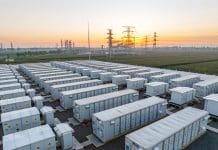A recent report from McKinsey & Company titled ‘Building value by decarbonising the built environment’ highlighted how existing technology can reduce emissions by more than 50% by 2030
The report pointed out how various business opportunities throughout the value chain can facilitate cost-effective decarbonisation for stakeholders in the built environment, paving the way for reducing of built environment emissions.
McKinsey & Company is a global management consulting firm that helps organisations achieve sustainable and inclusive growth. They have a range of clients in the private, public, and social sectors who collaborate to address complex problems and drive positive change for all stakeholders involved.
They aim to use innovative strategies and transformative technologies to help organisations adopt sustainable practices, improve performance, and cultivate future-proof workforces.
Existing methods are efficient and cost-effective
McKinsey examined over 1,000 potential strategies for reducing carbon emissions in the built environment. They identified the 30 most effective ways to decarbonise buildings. A significant number of these methods are already cost-effective compared to traditional practices. Thanks to industrial advancements, many of these methods are projected to reach cost parity or come close to it by 2030.
To capitalise on the economic advantages of these methods, it is crucial for stakeholders to take decisive action to boost the production of technologies and materials.
Stakeholders are encouraged to focus on service companies, unlocking supply chains, and creating essential operational skills throughout the value chain. This is important in creating solutions on a large scale and fully harnessing economic benefits.
Reducing heating energy is key to cutting built environment emissions
For example, a significant portion of operational built environment emissions, around 60%, is attributed to space cooling, space heating, and water heating. However, by using heat pumps, it is possible to mitigate up to 60% of emissions related to heating and cooling.
“The report highlights potential pathways to decarbonise the built environment and presents many proven and available technologies and solutions that companies in the ecosystem can implement today, and often cost-effectively,” said Erik Sjödin, partner at McKinsey & Company.
“We have aimed to focus on some of the largest opportunities that industry players could realise by scaling production, building future operating models, and developing skills and expertise across the value chain,” he continued.
“The built environment is a crucial sector for decarbonisation, and companies in this sector have a unique opportunity to capture value and build businesses while enabling the transition to a low-carbon world,” concluded Brodie Boland, partner at McKinsey & Company.














